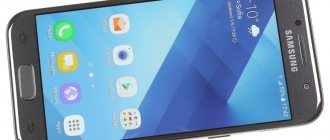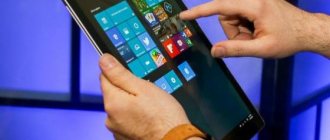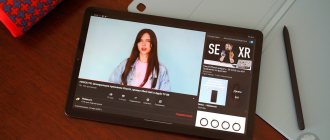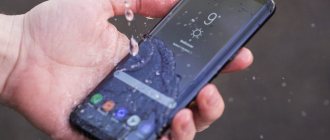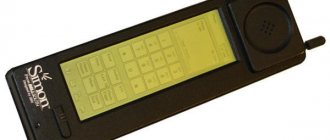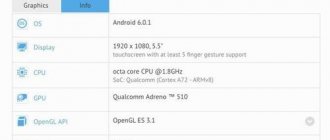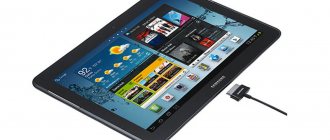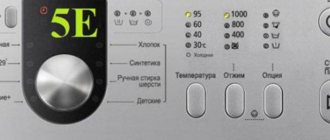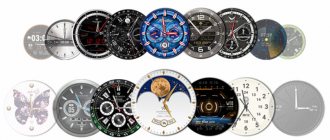The editors of DGL.ru have a feeling that smartphone manufacturers are completely confused about the naming of their devices. In other words, they have forgotten how to name models so that it is immediately clear what class the smartphone belongs to, when it was released and what it can do. And for this reason, it can be very difficult to figure out what is in front of you - a budget device or a middle-class device, a current model or something from the past.
Therefore, we decided to launch a series of materials in which we will tell you which models from which manufacturers are included in which series, and what it all means. Let's start with one of the market leaders - Samsung. Things aren't as bad for her as for some others, but still there are some oddities.
Samsung Galaxy Note series smartphones
With the Galaxy Note series, everything is as simple as possible: at one time it includes only one current device, complete with a stylus (hence, in fact, Note - this word is translated from English as “note”). Right now it's the Galaxy Note 8. If you want, you can find the Galaxy Note 5, and collectors should be on the hunt for the Galaxy Note Edition (probably named in honor of fans who have not given up on Samsung after the whole fire story). This, if anyone doesn’t remember, is a refurbished Galaxy Note 7 with new firmware and a safe battery. Galaxy Note FE is sold only in Asia.
Samsung Galaxy Note 8
Samsung Galaxy S series smartphones
And here everything is not so complicated: there is the Galaxy S9, there is the Galaxy S9 Plus, which is a little larger and a little more serious in terms of photo capabilities. The Galaxy S8, Galaxy S8 Plus, Galaxy S7 and Galaxy S7 Edge models are still on sale, but there is no confusion with them. The only point that requires clarification is the Galaxy S8 Active and Galaxy S7 Active models. These are devices with shock protection, enclosed in “off-road” housings, as indicated by the word Active (supposedly an active lifestyle). They are not officially supplied to us, so those interested will have to order these models from the USA. Perhaps it makes sense: the same Galaxy S8 Active is the only “eight” with a flat screen. Meanwhile, the Galaxy S9 Active has not yet been presented, but, most likely, it will be released sooner or later.
Samsung Galaxy S8 Active
Versions
Giorgio Armani Galaxy S (I9010)
Samsung also released an image version of the device labeled Giorgio Armani. The design is different from the regular Galaxy S, as it is based on the Galaxy Captivate, available on the AT&T network in the US. Links to Armani websites have been added to the menu, and several ringtones and wallpapers have been added compared to regular models.
Galaxy S scLCD (I9003)
To reduce the price of the device and due to the shortage of Super AMOLED displays, a special modification of the Samsung Galaxy S with the index I9003 was made, which has 4 and 16 GB of memory, a Clear LCD screen, an OMAP 3630 processor and a PowerVR SGX530 GPU. Also, the I9003 does not have a separate audio chip. It is named Galaxy S scLCD or Galaxy SL.
Galaxy S Plus (I9001)
In order to update the model and bring it closer to the 2011 devices, a version of the Galaxy S Plus or Galaxy S 2011 Edition with the index I9001 was released. It was equipped with a Qualcomm Snapdragon 8255T processor with a frequency of 1.4 GHz, an Adreno 205 graphics accelerator, which is slightly slower than the SGX-540, and the battery capacity was increased to 1650 mAh. All other characteristics remain unchanged, like the original Galaxy S, released in 2010.
Galaxy S Advance (I9070)
To continue the Galaxy S line, Samsung has released a new smartphone called Galaxy S Advance. The model has a different body design, it is curved similar to the Galaxy Nexus model, and the built-in camera has an LED flash. The hardware has been completely updated: the phone is now based on the NovaThor U8500 chipset, developed by ST-Ericsson. It includes a dual-core ARM Cortex-A9 (ARMv7) processor (APU) operating at 1 GHz, a single-core Mali-400 MP graphics accelerator, a proprietary signal processor and a GPS chip. The amount of RAM has increased to 768 MB. The 5 MP camera shoots in 720p, 1.3 MP front camera. On January 7, 2013, Android 4.1.2 was released and is available in Kies for the region (SER).
Captivate (SGH-i897)
Samsung i897 was released for the American operator AT&T, equipped with three mechanical buttons (volume rocker and power) and four touch ones. There is no familiar mechanical button on the front panel. 1 GHz processor, 512 MB RAM, 5 MP main camera without flash but with autofocus, no camera for video calls. Android 2.3.5 - 4.2.2. The phone also works with GSM operators in Russia, Kazakhstan, Ukraine, Belarus, etc.
Galaxy S 4G (SGH-T959V)
Samsung T959V was released in 2011 for the T-Mobile operator. There are four touch buttons on the front panel, there is no mechanical button. Cortex A8 Hummingbird 1 GHz processor, 512 MB RAM, 5 MP camera with autofocus, supports HSPA+, Android 2.2.
Samsung Galaxy A series smartphones
This series includes devices of the middle and upper-middle class. They are weaker than the representatives of the Galaxy S series, but for most consumers the capabilities of the ASH are quite enough, which is why the series is popular and long-lived.
Now in Russian retail there are models Galaxy A3 2020, Galaxy A5 2020, Galaxy A7 2020, Galaxy A3 2020, Galaxy A5 2020, Galaxy A7 2020, Galaxy A8 2020 and Galaxy A8 Plus 2020. All of them are interesting to one degree or another, although the models 2020, of course, cannot be called very relevant today.
Samsung Galaxy A8 2018
Sales of the Galaxy A6 2020 and Galaxy A6 Plus 2020 began in May. Roughly speaking, these are the successors to the Galaxy A5 2020 and Galaxy A7 2020 models, which were not updated this year.
Samsung Galaxy A6 Plus 2018
Please note that the Galaxy A8 2020 and Galaxy A8 Plus 2020 are the first devices of the Galaxy A8 series on the Russian market. In Asia this designation has been used before. In addition, huge smartphones of the Galaxy A9 family with 5000 mAh batteries were once sold in China.
How to distinguish an original Samsung phone
Almost every second buyer of a Samsung mobile phone asks us if the phone has been refreshed. And here we can tell you with 100% confidence that all the phones in our online store are completely new. It's quite easy to check. If you have a normal phone in front of you, then the first thing: all the parts should be perfectly tailored, and you shouldn’t notice any cracks or uneven lines by eye. The serial numbers on the phone itself, the box, and the service code *#06# must match. Refurbished phones can be dangerous because often the assembly of so-called REFRESHES is carried out by non-specialists or simply people aimed only at profit. And almost anything can be installed on the phone. Most often these are Chinese copies of screens and low-quality batteries. This can not only affect the longevity of the phone, but also cause a fire (in case of poor quality batteries.)
Chinese copies.
And of course, the worst thing in our article is Chinese copies of phones. I want to make a reservation right away that the word copy is not applicable to these phones; it is better to use the word fake.
You can find many fake Samsung phones on the Russian market. I will say more, it’s even difficult to say how many types and types of fakes are sold by dishonest sellers. Most often, these phones cost almost half the price of the original, and according to many, “they are no different from the original.”
Let's look at this issue. Of course, each of us wants to save money and if there is no difference, why pay more. But I want to upset you - of course there is a difference. The first is, of course, the build quality itself, the second is performance, and the third is the quality of components.
Counterfeits can be divided into two large groups.
- The cheapest (from 6,000 to 15,000 rubles).
- And the middle class (everything that costs more than 15 thousand.)
Of course, you understand that now I rely primarily on the Samsung Galaxy S7 and its copies.
There's no point in talking about cheap fakes. They are very easy to distinguish from the original. They are often made of low-quality materials and contain something that should not be in the original, namely a TV with an antenna, a stylus, etc. If you see this, then you shouldn’t waste your time and money. This phone will not serve you faithfully, but will most likely break down in 2-3 months.
The next class is middle class fakes. In such phones, the Chinese try to recreate the original as much as possible and do not even skimp on materials.
It is much more difficult to identify such a phone, but it is still possible. The algorithm of actions is the same as with the definition of EUROTEST and refresh. The fake will not show up on the original website and, of course, will not respond to branded service commands, plus you can tell if it’s the original by looking at the localization of the firmware. In real phones it is perfectly translated into Russian and you won’t find any typos or outright mistakes in it. Of course, you can ask me why fakes are terrible, and I will answer you that in them you will find all the problems of the previous groups. There are low-quality components and, of course, a lack of service, plus the copies noticeably lag behind the original in terms of performance.
To determine what's inside your new phone, use benchmarks (AnTuTu, Geekbench), which will show you what kind of hardware is installed in the device and, in general, who manufactured the phone.
So, let's summarize. You can save money when buying a Samsung phone, but you need to follow a few simple rules.
- Buy only ROSTEST (so as not to encounter problems with service).
- When purchasing, please enter the serial number of your device.
- Be sure to check the integrity of the case and the quality of workmanship.
- Remember that the serial numbers on the phone, the box and the service command *#06# must match.
By following these simple rules, you can buy a really high-quality phone at an affordable price. I would like to remind you that we only sell official Samsung phones and are ready for any quality checks.
Samsung Galaxy J series smartphones
The situation with Galaxy J smartphones is perhaps the most confusing. In Russian retail there is a whole scattering of models of this line, and it is difficult to understand them. Seriously. But we still tried.
So, there are the Galaxy J3 2020, Galaxy J5 2020 and Galaxy J7 2020 models - this is the most interesting trinity in the Galaxy J family. So to speak, the key and latest products. The Galaxy J2 2020 model falls into the same category (of key fresh products). Soon the Galaxy J2 Pro 2020 will be added to the Galaxy J2 2020 - the essence is the same, but with an increased amount of RAM (2 GB versus 1.5).
Samsung Galaxy J2 2018/Galaxy J2 Pro 2018
At the same time, some stores still sell Galaxy J 2020 smartphones - Galaxy J2 2020, Galaxy J2 Pro 2020 (the same, but more RAM and internal memory), Galaxy J3 2020, Galaxy J5 2020 and Galaxy J7 2020. The same series includes the Galaxy J1 2016, Galaxy J1 Mini 2020 and Galaxy J1 Mini Prime 2020 models (we are talking about them separately, since Samsung has stopped producing new Galaxy J1 models). The first device is 4.5-inch, the other two are 4-inch. At the same time, the Prime version has a slightly faster processor (1.5 GHz versus 1.2) and more RAM (1 GB versus 768 MB). Please note that all 2020 devices have already been discontinued, but they are still available for sale. We don’t know whether it’s worth buying them. They are old, getting confused in them and buying something that is not what you need is a piece of cake.
Samsung Galaxy J1 Mini 2016
Do you think that's all? No matter how it is! There are also a number of devices of the Galaxy J family, whose position in the Samsung line is mysterious and does not obey the laws of logic. There is, for example, the Galaxy J5 Prime smartphone. It looks like some kind of intermediate version between the Galaxy J5 2020 and the Galaxy J5 2020 - that is, the Galaxy J5 Prime will be worse than the latter smartphone, but differs favorably from the first (for example, with a metal body). But the situation with the Galaxy J2 Prime is different: it is inferior to both the Galaxy J2 2020 and the Galaxy J2 2020. And for some reason, the Galaxy J2 2016 has the highest screen resolution in this trinity - 1280 x 720 versus 540 x 960.
The picture is completed by the Galaxy J7 Neo smartphone, which is very similar to the Galaxy J7 2020, but lacks NFC, is equipped with a slightly less capacious battery and costs about a thousand rubles less.
Samsung Galaxy J7 Neo
In some markets (but, fortunately, not in Russia) there are a bunch of other versions, including Galaxy J7 Max, Galaxy J7 V, Galaxy J7 Duo, Galaxy J7 Prime 2, Galaxy J3 Emerge and so on.
Here I just want to say: “Buy Samsung Galaxy J smartphones! They are quite good! But you can’t figure them out without a bottle...” Why is everything so bad with Korean naming? There is a suspicion that Samsung is more interested in selling flagship devices and is putting all its efforts into them. But entry-level models, to put it mildly, live their own lives and are not given much attention. Although the same Galaxy J1 became the third most popular smartphone in Russia at the end of February.
Samsung - brand history
Samsung Group is a South Korean group of companies, one of the largest chaebols (“money families”) in South Korea, founded in 1938. It is known in the world market as a manufacturer of high-tech components, telecommunications equipment, household appliances, audio and video devices. The company's main office is located in Seoul. The word "Samsung" means "three stars" in Korean. The history of the Samsung industrial group, one of the monsters of the modern global economy, began in 1938, then in a unified Korea. An enterprising resident of the town of Daegu, trader Byong Chul Lee, decided to expand his business and, together with his Chinese partners, founded a rice trading company. Things were going well, the company was expanding into new areas of activity, its staff was growing, and in 1948 it was decided to give the company a fashionable “American” name: Samsung Trading Co. There is no clear version about the origin of the word Samsung (pronounced “samson”), but the most common version is that it means “three stars” in Korean. The choice of name may be due to the three sons of company founder Byong Chul Lee, one of whom, Kun Hee Lee, took over the company in 1987. In 1969, the company made a breakthrough into the advanced electronics industry practically from scratch. Together with the Japanese company Sanyo, Samsung Electronics Company “SEC” was created, which specialized in the production of semiconductors and a few years later became the property of Samsung. A serious step forward in the history of the company occurred in 1969, when it, together with the Japanese company Sanyo, opened a workshop in South Korea for assembling black-and-white Japanese televisions. Already in 1973, a full-fledged large-scale production of various consumer electronics was established in the city of Suwon, and the joint venture came completely under the control of Samsung Trading Co and turned into the Samsung Electronics Corporation. Having started its activities in the consumer electronics market practically from scratch, within a few years Samsung Electronics took a prominent place in it. By adopting Sanyo technology and then concentrating on the production of semiconductors, the corporation eventually became one of the largest and most famous electronics manufacturers in the world. In August 1973, the corporation's headquarters moved to Suwon, South Korea, and by December, construction of a consumer electronics plant was completed. Later, the Korean company Semiconductor Co. joined the corporation, marking the beginning of mass production of washing machines and refrigerators. By 1978, a sales office was opened in the United States, and Samsung Electronics' export volumes exceeded $100 million. In 1979, the first consumer video recorders were released. In 1980, Korea Telecommunications Co. joined the corporation, which was then renamed Samsung Semiconductor & Telecommunications Co. In 1983, production of personal computers began (model: SPC-1000). And in 1983, the 64M DRAM chip with a memory capacity of 64 MB was released, SAMSUNG was the first to release a player capable of reading regular compact discs, CD-ROM, VIDEO-CD, PHOTO-CD, CD player-OK. A year later, a sales office was opened in England and a plant for the production of VCRs in the USA, and construction of the largest plant for the production of microwave ovens (2.4 million units per year) was completed. In 1986, the Korean Management Association awarded Samsung Electronics the "Best Company of the Year" award. The same year was marked by the release of the ten millionth color television, the opening of sales offices in Canada and Australia, and research laboratories in California and Tokyo (Japan). In the fall of 1988, a representative office appeared in France, and the corporation merged with Samsung Semiconductor & Telecommunications Co. By 1989, Samsung Electronics ranked 13th in the world in the production of semiconductor products and opened factories in Thailand and Malaysia. In 1992, factories were launched in China and Czechoslovakia, and the company itself was included in Group A, according to the international credit rating. In order to improve the management structure, in December of the same year, Samsung Electronics switched to a unified presidential management system. In December 1991, the development of personal mobile telephone devices was completed. In August 1992, the development of the mobile telephone system was completed. The company's early logos featured three stars. But in 1993, Samsung, considering the previous logo to be inconsistent with the image of an international corporation, decided to replace it. It was then that the modern emblem we are accustomed to saw the light of day - a dynamically inclined blue ellipse with the company name written inside. Excellent design and a large-scale advertising campaign did their job: the logo became one of the most recognizable in the world. Advertising students at leading universities are now studying the Samsung logo change as an example of an exceptionally successful rebranding. In 1994, sales reached US$5 billion, and the Mukoonhwa Factory, using disabled workers, opened in November. By 1995, exports exceeded US$10 billion, and in February Samsung Electronics acquired a 40.25% stake in computer company AST Co. (USA). In September 1996, Samsung Electronics products were recognized as meeting the ISO-140001 standard. In May 1997, the company became the first exporter of CDMA equipment to Shanghai (China). The company was elected as an “Olympic Partner” in the “Wireless Communications Equipment Manufacturers” category. Sprint Co. shipped personal communications devices (PCS) in June. (USA). And in July, the world's lightest CDMA cell phone was developed, weighing 137 g. By 1998, the corporation captured the main share of the LCD monitor market and began mass production of digital TVs. In 1998, Samsung released a new model of DVD player, where specially developed ADAT technology allows you to view discs recorded in the NTSC system on PAL and SECAM TVs without loss of image quality. Diamond heads were introduced into them, the number of which reached six. In March, development of the world's lightest personal telephony device (PCS, model SPH-4100) was completed. In January 1999, Samsung Electronics received the "Best Consumer Electronics Company" award, awarded annually by Forbes Global magazine. In July 2007, within the framework of the XI International Economic Forum in St. Petersburg, an investment agreement was signed between representatives of Samsung and the administration of the Kaluga region. On the territory of the Vorsino industrial park, a plant of the Samsung Electronics company was built - Samsung Electronics Rus Kaluga LLC; the territory allocated for the industrial complex amounted to 47.3 hectares. The first production line of the plant was launched in October 2008. The total investment amounted to 3.5 billion rubles. In the third quarter of 2008, Samsung managed to take first place in mobile phone sales, ahead of its main competitor, Motorola (Strategy Analytics); in the European market, the corporation also took first place, displacing Nokia. In 2008, a TV production plant was opened in Russia (Kaluga region), the company assembles LCD and plasma TVs. The plant has a workshop for the production of plastic parts for the product body, but the line is not fully loaded, and the bulk of the devices are assembled from imported parts (mainly made in China). On March 11, 2009, a distribution center for Samsung Electronics, the Samsung Russian Distribution Center, was built in the Kaluga region on the territory of the Vorsino industrial park. The warehouse was built in the shortest possible time. In 9 months the warehouse grew from scratch. SRDC is equipped with the latest technology. In August 2020, Samsung launched Samsung Pay in South Korea. This tool will allow you to make payments using the brand’s flagship smartphones that support NFC data transfer. In September 2020, Samsung launched its own payment system in the United States - Samsung Pay. In January 2020, Samsung announced that it would be working with Microsoft to develop IoT devices based on Windows 10, where the companies would work together to develop products that would run on the platform, as well as integrate with other companies developing hardware and services. Microsoft OPERATING SYSTEMS. Samsung launched a fitness smart card called Gear Fit 2 and a brand of wireless headphones called Gear Icon X. On August 2, 2020, Samsung introduced the Galaxy Note7 smartphone, which will go on sale on August 19, 2020. However, in early September 2020, Samsung suspended sales of the phone and announced an unofficial recall. This came after some parts of the phones had batteries with a defect that caused them to cause excessive heat, leading to fires and explosions. Samsung replaced recalled units of phones with a new version; however, it was later revealed that the new version of the Galaxy Note7 also had a battery defect. Samsung recalled all Galaxy Note7 smartphones worldwide on October 10, 2020, and permanently stopped production of the phone the next day. On August 31, 2016, Samsung announced the Gear S3 smartwatch, which was released on November 18, 2020. In April 2020, Samsung introduced a new model of the unusual Galaxy J2 Pro to the home market - a “smartphone” that does not have modules to support 2G or 3G, and also does not have the ability to connect to Wi-Fi networks. The target audience of the “smartphone” is local students who are trying to avoid distraction due to the Internet.
Samsung Galaxy Xcover series smartphones
Everything is elementary here: the line includes protected smartphones (Cover - in English this is a cover, covering, casing) of the middle level, and they are protected not only from water, but also from impacts. At one time, representatives of this series were supplied to Russia, but then “the tap was turned off.” And now you can bring Samsung Galaxy Xcover 4 - and this is the latest smartphone in this series (the announcement took place in the spring of 2020) - from Germany, for example.
Samsung Galaxy Xcover 4
Samsung Galaxy C series smartphones
A series of smartphones specifically for China. We don’t know why they are not sold outside of China, but... In general, our guess is that the first Galaxy C models from two years ago looked very much like the iPhones of that time. In copyright-tolerant China, this design approach appears to be acceptable. But in other countries they can sue. However, modern models of the Galaxy C series are no longer similar to the iPhone. These are just mid-level smartphones in thin metal cases. They can be called conditional analogues of the Galaxy A - and it wouldn’t be too much of a mistake.
Samsung Galaxy C5 2016
Samsung W series smartphones, Folder, Galaxy Leader
Samsung foldable smartphones are sold under these names in China. They are not offered in other countries. Why? Probably for the reason that in China there is still a certain cult of “folding phones”, and manufacturers need to satisfy the needs of consumers. In fact, a folding Android smartphone is an extremely inconvenient thing: you can’t really play on it, and it’s not very convenient to poke at the touch screen when it’s open. In general, let the Chinese use it, and we will make do.
Samsung Galaxy Leader 8
History of Samsung Galaxy: scary to remember, but we'll try
Tonight Samsung will show off its next flagship, but for now let's remember past achievements.
Before the Galaxy line appeared, everything was sad for Samsung. The Koreans made “clamshells” with bright color screens, then switched to sliders. Compared to advanced handsets from SonyEricsson and Nokia smartphones, they looked pale. Well, the design is not for everyone, there were big problems with it.
Sometimes designers began to use particularly strong drugs, and then such masterpieces of an inflamed consciousness were born.
Samsung Serenata/Symphony
Samsung Z130
Then Samsung decided to follow the path of its competitors and began producing phones that resembled analogues from Nokia. Here are a couple of examples. Check out how Samsung has listed all the specs right on the phone's body.
Nokia N96 vs Samsung Inno V8
Nokia N82 vs Samsung i550
In moments of deep despair, Samsung tried to copy Blackberry products.
Then Android came along. Only geeks knew about him, who loved various strange pieces of hardware. This is the Galaxy i7500, Samsung's first Android smartphone. Stupid interface, right? Especially this Vista style clock, cool widget.
Samsung also thought that customers were not only confused by the incomprehensible and unfamiliar filling, but also by the outlandish design. So a year later the Galaxy S comes out. A completely different design! Because of it, Samsung later sued Apple due to its suspicious similarity to the iPhone 3GS. By the way, in America, the Korean novelty was received very coldly: in 45 days, 1 million of these plastic Galaxy were sold. The 3GS sold out the same amount of copies in just a week.
Hi, I'm a Samsung designer, I love to draw iPhones, I have the most creative profession in the world!
Copy vs original
A year later, the Galaxy S2 came out. A team of designers who had designed iPhones before decided not to take risks and made the new product a little less like an iPhone.
The S2 had the coolest camera (after the Nokia 808, of course), a comfortable (albeit with brakes) shell, and a 4.3-inch screen that pleased the eye with acidic colors. Well, just like your Samsung TV in the kitchen. If you do not pay attention to the flawed appearance, the smartphone at that time was very successful in terms of characteristics. What else is there to love about Samsung? Only for top-end hardware, which always lagged under the crooked shell.
Galaxy S3 was released in 2012. It did not live up to expectations, the phone was slow (as usual), quickly discharged and in every possible way tried to fall out of my hand onto the floor. But what can you do, he was all impeccably glossy. Samsung talked about the unity of technology and nature, they say, the nasty gurgling sounds when you wander through the menu are reminiscent of falling drops of water. Regardless, this toilet squelching reminded me of something else. It's good that these "plop-plop" can be turned off.
By the way, at the same time Samsung significantly increased the screen from 4.3 to 4.8 inches. And the race for phones for mutants began. By the way, the Galaxy S3 has survived to this day and is still sold with slightly modified hardware. So if you want to look at a living mummy, then go to the store and poke your finger at this miracle, which some perverts are still buying.
Then the Galaxy S4 comes out. Externally, it was not much different from last year’s model. But in terms of characteristics, everything was cool: a 13 MP camera, a 5-inch screen with a resolution of 1920x1080. Samsung skillfully operated with numbers, and also removed FM radio from the phone. Like, relics of the past.
As usual, the smartphone came out in a bunch of modifications, and there was also a secure version of the Galaxy Active. Against the backdrop of the Korean-style exquisite glossy splendor, it didn’t look so shabby. The four heads of screws that stick out in the corners hint that the devil is in the details, and the Samsung designer is asleep and sees how he adds another useless part to the phone’s body.
Then a version came out with a leather-like plastic finish in the style of the Galaxy Note 3. Other manufacturers subsequently fell in love with this sophistication.
Galaxy S4 and S4 Active: which is scarier?
Samsung is tired of attacks from the press and users who are tormented by glossy remnants. The phone cost about $900 (or 30,000 rubles), and for that kind of money you want a normal finish; budget smartphones for operators do better.
So the Koreans decided to refresh their industrial reserves of glossy plastic. Somewhere in the depths they dug up a new finish, which the evil press subsequently dubbed with various bad terms.
“Plaster”, “ceiling of VAZ classics” and other offensive words for sophisticated designers were heard with enviable consistency. Well, what to do, the smartphone turned out to be ugly in appearance, although functional, as usual. There is also moisture protection, a fingerprint scanner, and an improved camera, but the design is again let down.
After the design department was promised an indefinite business trip to North Korea, the guys got down to work in earnest. I don't know what tests the artists went through, but the Galaxy S6 exceeded all expectations. Glass, metal, beautiful colors, what else is needed for happiness. And let the shell again diligently eat the RAM like a herd of hungry pigs, let there be no memory card, and the battery again runs out before our eyes. But damn, they were able to make a very beautiful device.
Tonight we will see the new Galaxy S7. There is no particular intrigue, everything has leaked online. We collected all the information and wrote about the new flagship. Let me remind you that there is a new camera, more powerful processors and more RAM, they have added protection from dust and moisture, the screen detects the pressure applied, and the memory card slot has been returned. The design is the same as last year. Would you risk cheating on your beloved iPhone?
Samsung Z series smartphones
A line of smartphones based on the Tizen operating system. Intended for corporate customers, it has gained some popularity in India and Russia. These models are not sold in ordinary stores (at least here), and they are not of interest to ordinary people due to the lack of the software we are all used to - instant messengers, social networks, etc. But they stand out for their battery life: Tizen is extremely economical, and With a battery capacity of around 2500 mAh, a Z series smartphone can last 3-4 days.
Samsung Z4
